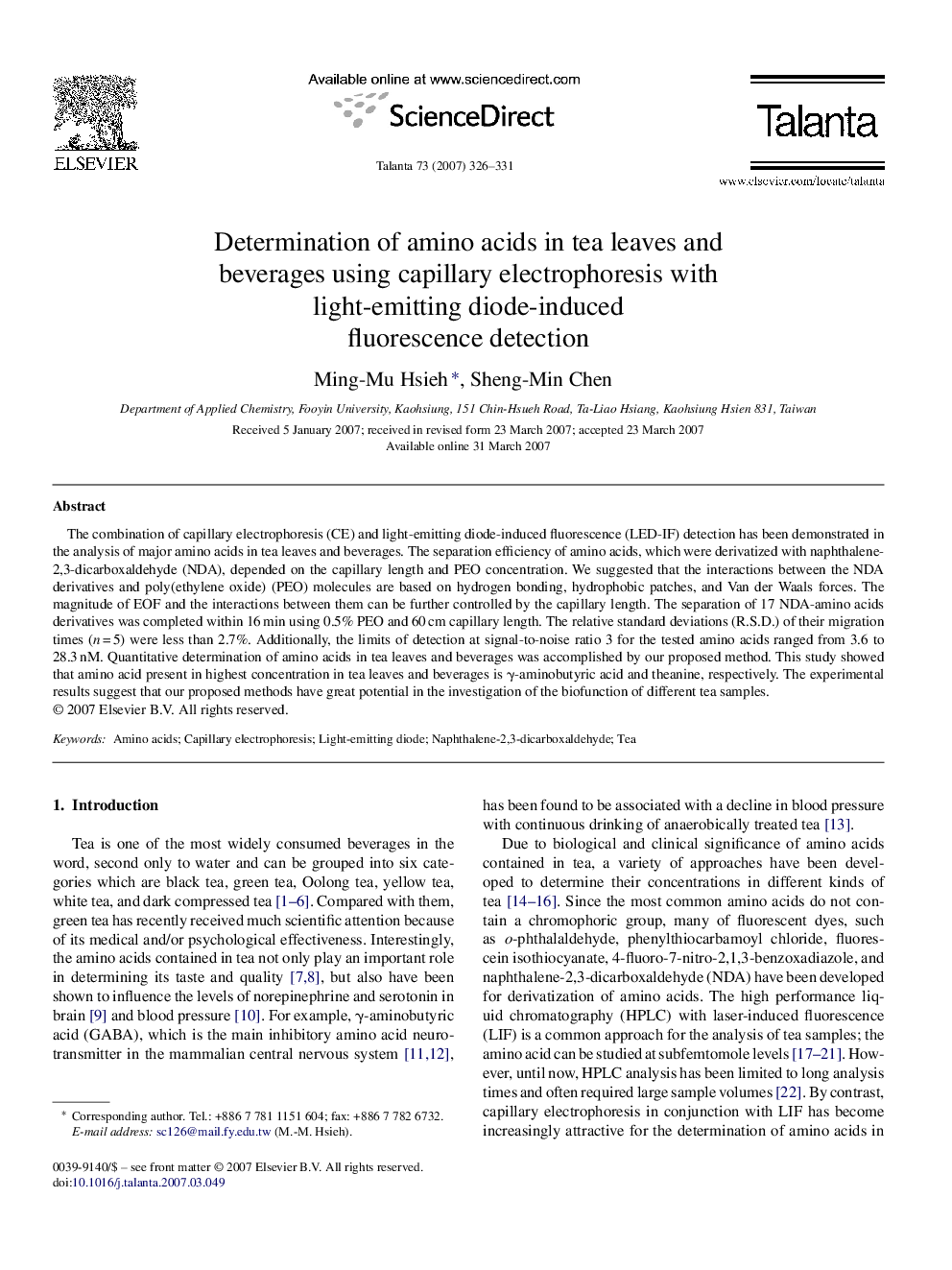| Article ID | Journal | Published Year | Pages | File Type |
|---|---|---|---|---|
| 1244757 | Talanta | 2007 | 6 Pages |
The combination of capillary electrophoresis (CE) and light-emitting diode-induced fluorescence (LED-IF) detection has been demonstrated in the analysis of major amino acids in tea leaves and beverages. The separation efficiency of amino acids, which were derivatized with naphthalene-2,3-dicarboxaldehyde (NDA), depended on the capillary length and PEO concentration. We suggested that the interactions between the NDA derivatives and poly(ethylene oxide) (PEO) molecules are based on hydrogen bonding, hydrophobic patches, and Van der Waals forces. The magnitude of EOF and the interactions between them can be further controlled by the capillary length. The separation of 17 NDA-amino acids derivatives was completed within 16 min using 0.5% PEO and 60 cm capillary length. The relative standard deviations (R.S.D.) of their migration times (n = 5) were less than 2.7%. Additionally, the limits of detection at signal-to-noise ratio 3 for the tested amino acids ranged from 3.6 to 28.3 nM. Quantitative determination of amino acids in tea leaves and beverages was accomplished by our proposed method. This study showed that amino acid present in highest concentration in tea leaves and beverages is γ-aminobutyric acid and theanine, respectively. The experimental results suggest that our proposed methods have great potential in the investigation of the biofunction of different tea samples.
